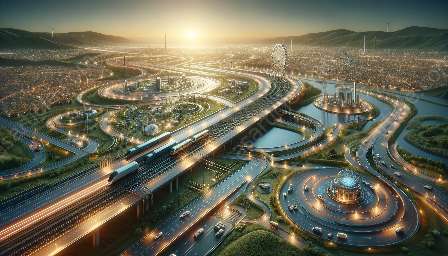Roadway drainage design is a critical aspect of transportation engineering and the geometric design of roads. It plays a crucial role in ensuring the safety and efficiency of road infrastructure. This topic cluster explores the principles, techniques, and considerations involved in roadway drainage design, highlighting its compatibility with geometric road design and transport engineering.
Importance of Roadway Drainage Design
Proper roadway drainage design is essential for maintaining the integrity of road infrastructure and ensuring the safety of road users. It involves the management of surface water to prevent issues such as flooding, erosion, and water-logging, which can compromise the stability and functionality of roadways. Efficient drainage systems also contribute to the longevity of roads, reducing the need for frequent maintenance and repair.
Relationship with Geometric Design of Roads
The geometric design of roads encompasses the layout, alignment, and physical characteristics of roadways. Roadway drainage design is an integral part of this process, as it directly influences the overall functionality and performance of roads. Proper integration of drainage elements, such as culverts, stormwater channels, and catch basins, into the geometric design ensures that water is effectively managed without impeding traffic flow or compromising road safety.
Considerations in Roadway Drainage Design
Several key considerations must be taken into account when designing roadway drainage systems. These include:
- Hydrological Analysis: Assessing the anticipated water flow patterns, volumes, and frequencies to determine the appropriate capacity and configuration of drainage infrastructure.
- Environmental Impact: Ensuring that drainage systems minimize negative environmental effects, such as erosion, sedimentation, and contamination of natural water sources.
- Safety: Integrating drainage components in a manner that promotes road safety by preventing hazards such as standing water, ice accumulation, and hydroplaning.
- Maintenance and Accessibility: Designing drainage features for ease of maintenance and ensuring that they do not impede the accessibility of roadside infrastructure for maintenance and emergency services.
Integration with Transport Engineering
Transport engineering focuses on the planning, design, and operation of transportation facilities and systems. Roadway drainage design is an essential element of transport engineering, as it directly impacts the functionality and resilience of road networks. It involves the application of hydraulic and hydrological principles to manage water within the transportation environment, addressing challenges related to urban drainage, highway design, and sustainable transportation infrastructure.
Techniques and Best Practices
Effective roadway drainage design employs various techniques and best practices to achieve optimal performance and longevity. These may include:
- Surface Grading and Cross Slope: Ensuring proper road surface contours and cross slopes to facilitate water runoff and minimize standing water.
- Use of Swales and Vegetated Channels: Incorporating natural or engineered channels for stormwater conveyance and treatment, promoting natural filtration and infiltration processes.
- Application of Hydrological Models: Employing advanced modeling and simulation tools to assess drainage needs and optimize system configurations for different scenarios.
- Integration of Green Infrastructure: Incorporating green infrastructure elements, such as permeable pavements, rain gardens, and bioswales, to mitigate stormwater runoff and enhance environmental sustainability.
Conclusion
Roadway drainage design is an indispensable component of transport engineering and the geometric design of roads. By effectively managing surface water and promoting the longevity and safety of road infrastructure, it contributes to the overall efficiency and sustainability of transportation networks. Understanding the principles and considerations of roadway drainage design is vital for engineering professionals and policymakers involved in the planning and development of roadways.

